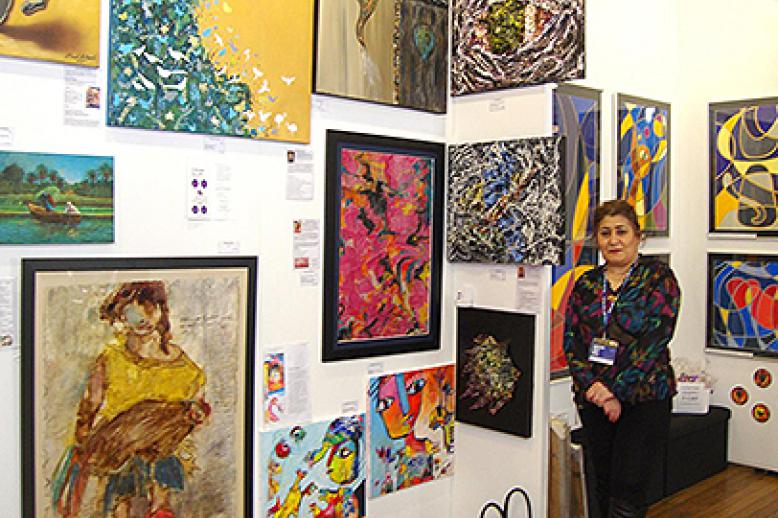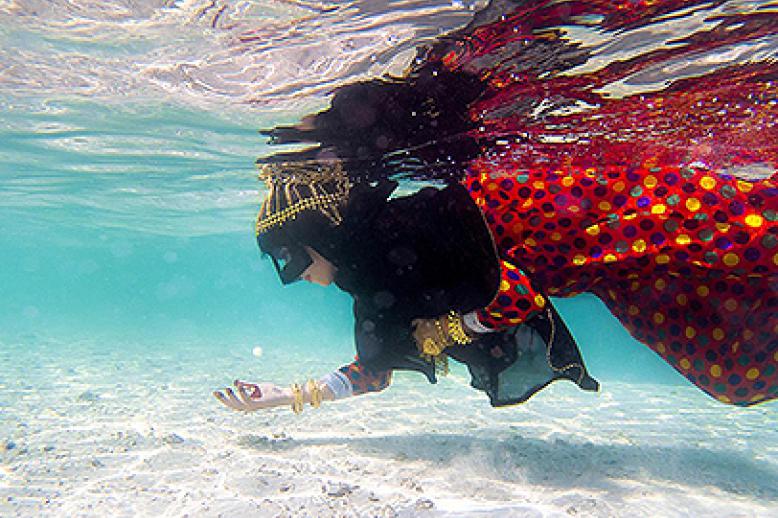Lebanon’s ‘Lamartine Valley,’ a source of poetic inspiration

It inspired French poet Alphonse de Lamartine two centuries ago and is still one of the most preserved and panoramic areas of Mount Lebanon. Hammana and its pine-covered valley known as “Vallee de Lamartine” is a typical Lebanese village with orchards, red-tiled stone houses, an old souk and historic palaces. It has resisted the blanket urbanisation that has defaced much of Lebanon’s countryside.
“It is almost the only village in the area that has preserved its architectural cachet and heritage,” said Hammana Mayor Bachir Farhat. “We have very strict zoning rules and a set of construction criteria, which we do not compromise, such as no high buildings are allowed and natural stones and red tiles are compulsory.”
Nestled in the heart of Lamartine Valley at 1,200 metres above sea level, Hammana was historically the economic centre of the Upper Metn District of Mount Lebanon. It is one of the country’s most popular mountain resorts, only a 30-minute drive from Beirut.
“It has been inhabited for centuries because it is very rich in water. At one point it had some 70 springs. People used to settle near water sources to cultivate and irrigate their land,” Farhat said.
A walk through the souk of Hammana, where cute little shops are centred on a well-preserved traditional fountain, is like a trip down memory lane, back to the old days of Lebanon.
At the tip of the old souk is the 700-year-old Mezher Palace, once the residence of the Druze governors of the district. Standing majestically on a rock overlooking the valley, the palace once hosted Lamartine, his wife, and daughter Julia during their voyage in the Orient in 1832. A commemorative plaque is in the room where the poet used to sleep.
Enthralled by the magic of the place, Lamartine wrote: “One of the most beautiful views that men have ever beheld, an opportunity to paint the creation of God, is the valley of Hammana. Painting or words can describe only one detail of the fairylike treasure with which the Creator endowed Lebanon. The greenery, the trees, the orchards and the forest are renowned, going down in succession and filling the valley with their riches.”
Today, Hammana and Lamartine’s hometown of Macon in eastern France have established special cultural ties. “We did a kind of pairing between the two villages. On May 5 we will be celebrating both villages in Macon through cultural activities. Last year the celebration was in Hammana,” Farhat said.
The annual Cherry Festival, a tradition established more than 50 years ago, is one of the main attractions in Hammana, famous for its different varieties of cherries. “We relaunched the festival after the war and it has since been a great success, attracting visitors from all over Lebanon,” Farhat said. “Some 20 tonnes of cherries were sold on that day and people can pick their own cherries in the many orchards.”
“The festival, which takes place in June, has encouraged people to replant their fields with cherry trees and helped reactivate the local economy,” he added.
Given that Hammana has a river that runs through one of the deepest valleys of Lebanon, it offers an ideal environment for outdoor activities, a feature that the municipality is set to build on. Ecotourism has been picking up through activities such as hiking, canoeing, abseiling over the waterfall, known as the Shaghour, trekking through a cedar forest that is 100 years old or snowshoeing in winter.
Hammana Artist House, in a three-storey building, was opened less than a year ago as a space dedicated to the performing and visual arts. It strives to become the residency of local and international artists who can meet, create and perform there.
“It was a dream come true to create a space out of the city and to create different dynamics in culture,” said Aurelien Zouki, artistic director of Hammana Artist House, which can accommodate up to 28 people at the same time.
“We host artists for one, two or three weeks, the time they need to develop their work and train, learn, meet and network,” Zouki said. “There is a huge need to have such a space because in Beirut artists lack proper conditions to work… They are working in a garage or on the balcony… Here is the perfect setting where they can dedicate all their time to their work.”
Hammana Artist House invites foreign artists to mingle and exchange ideas with young Lebanese artists and it hosts sponsored exiled Syrian artists, which Zouki said he hopes to accommodate free of charge.
The Lamartine Valley and villages will be the focus of the first pavilion representing Lebanon at the 16th Venice Biennale of Architecture under the theme “The Place that Remains.” It involves a reflection on the built environment versus the unbuilt land and visions for the future of Lebanese landscape.
Samar Kadi is the Arab Weekly society and travel section editor.
This article was originally published in The Arab Weekly.




